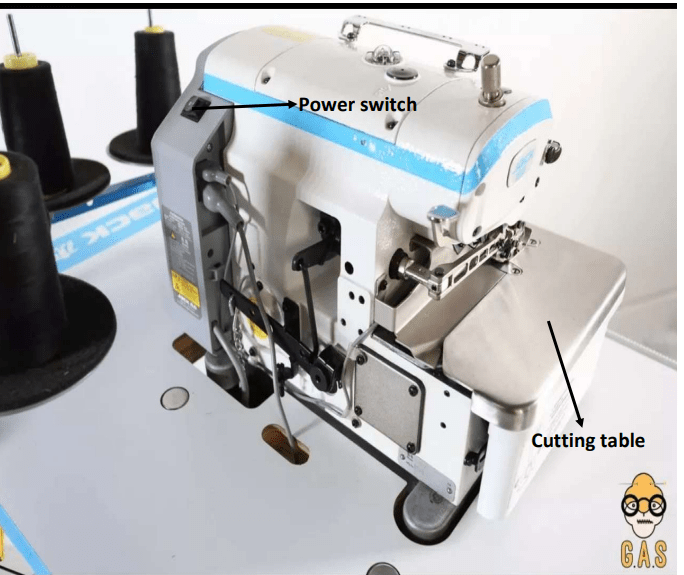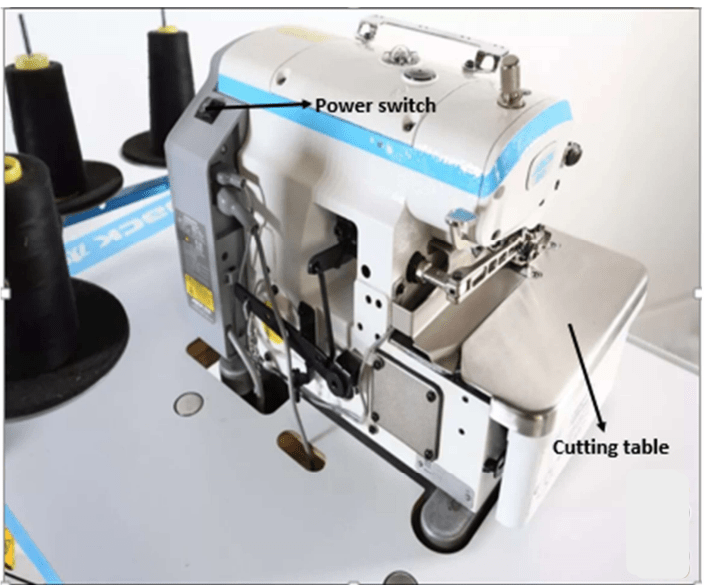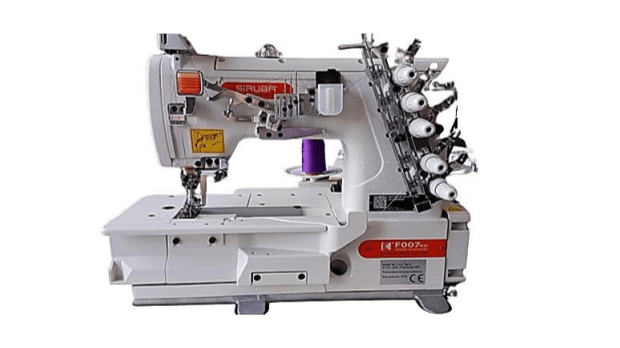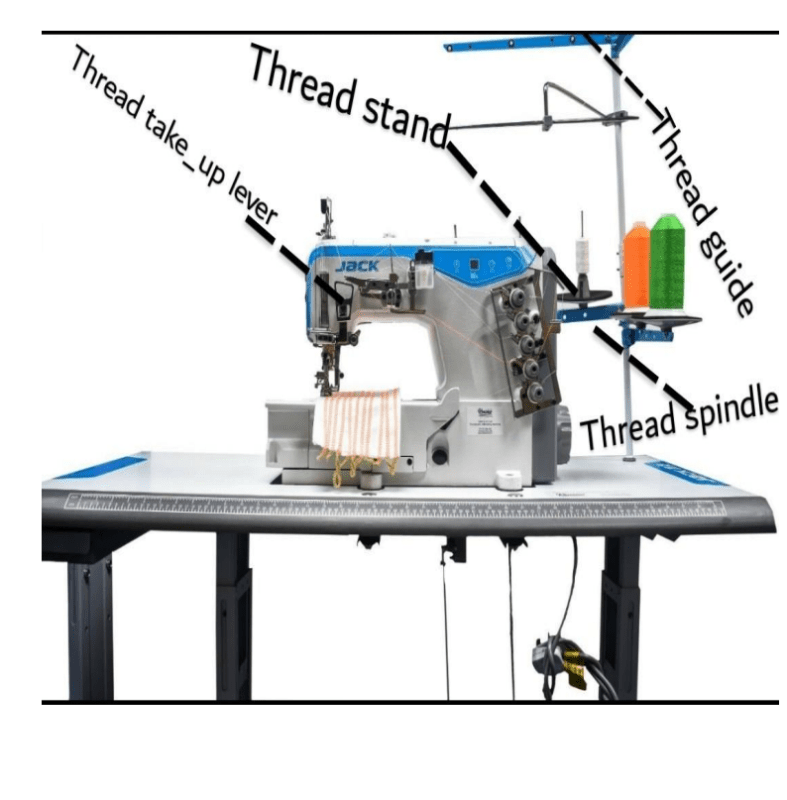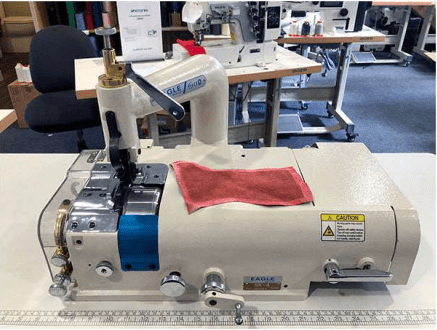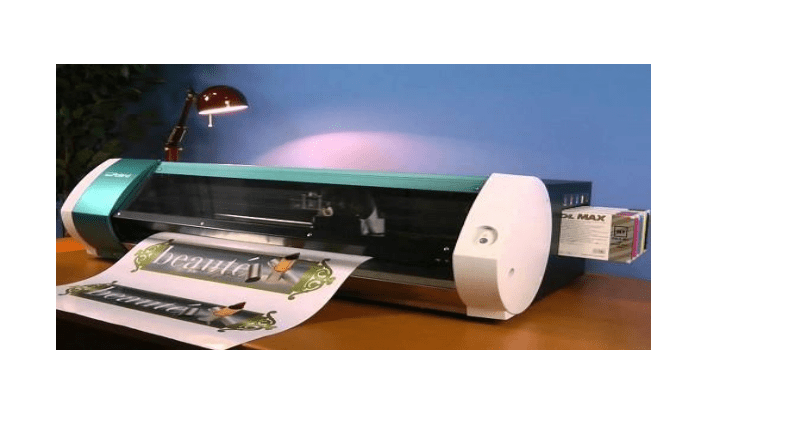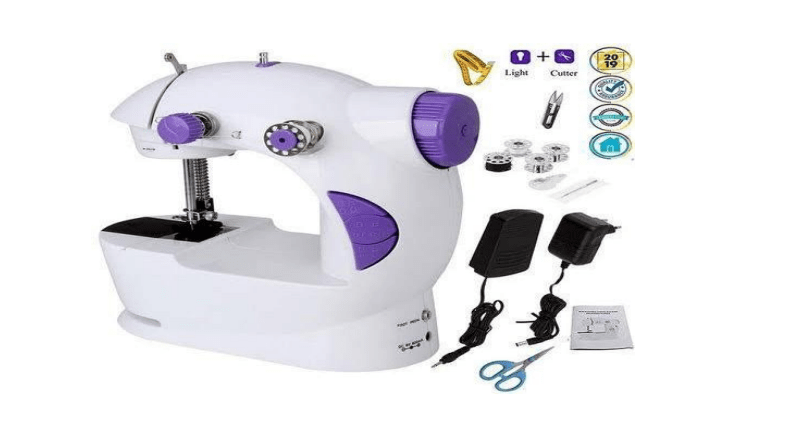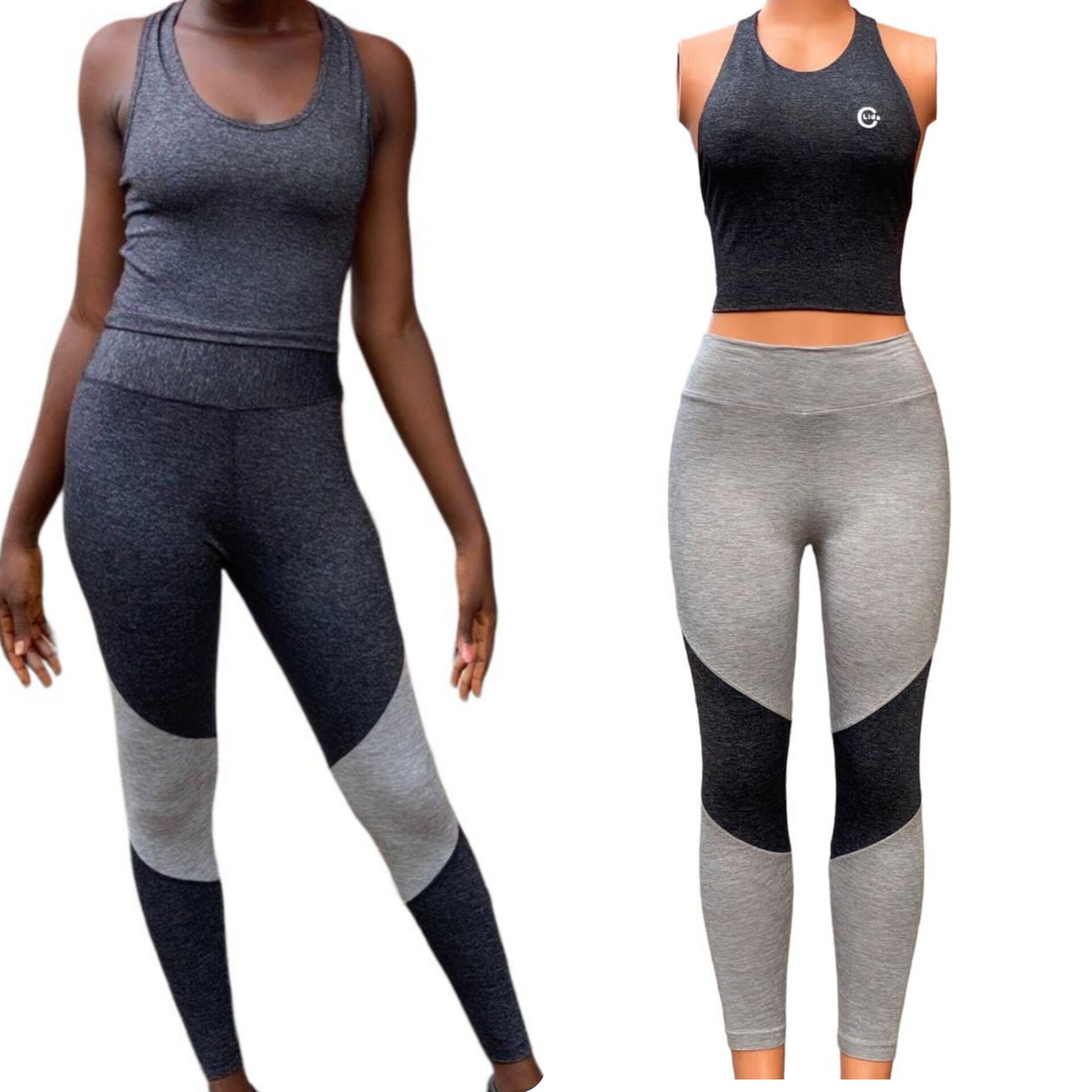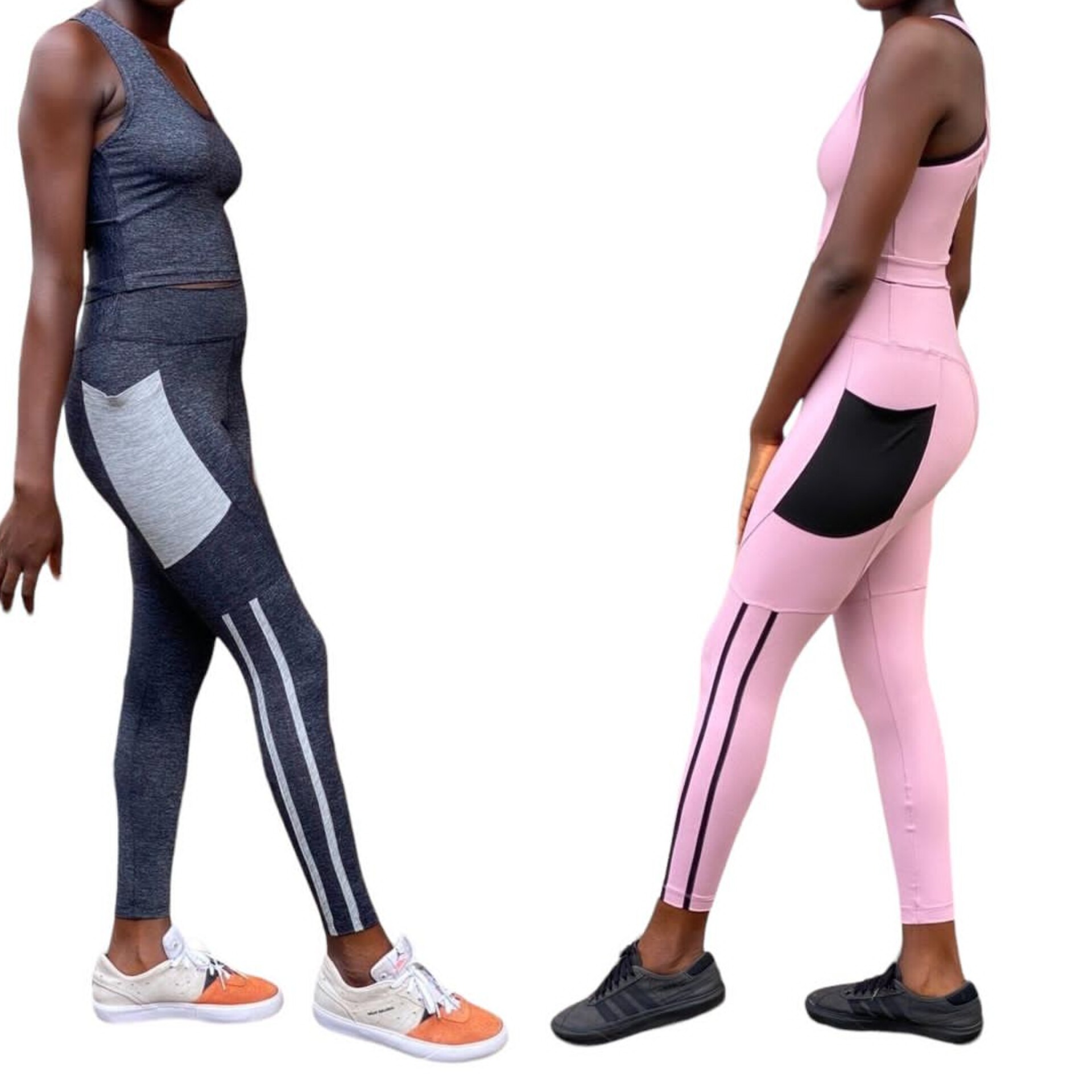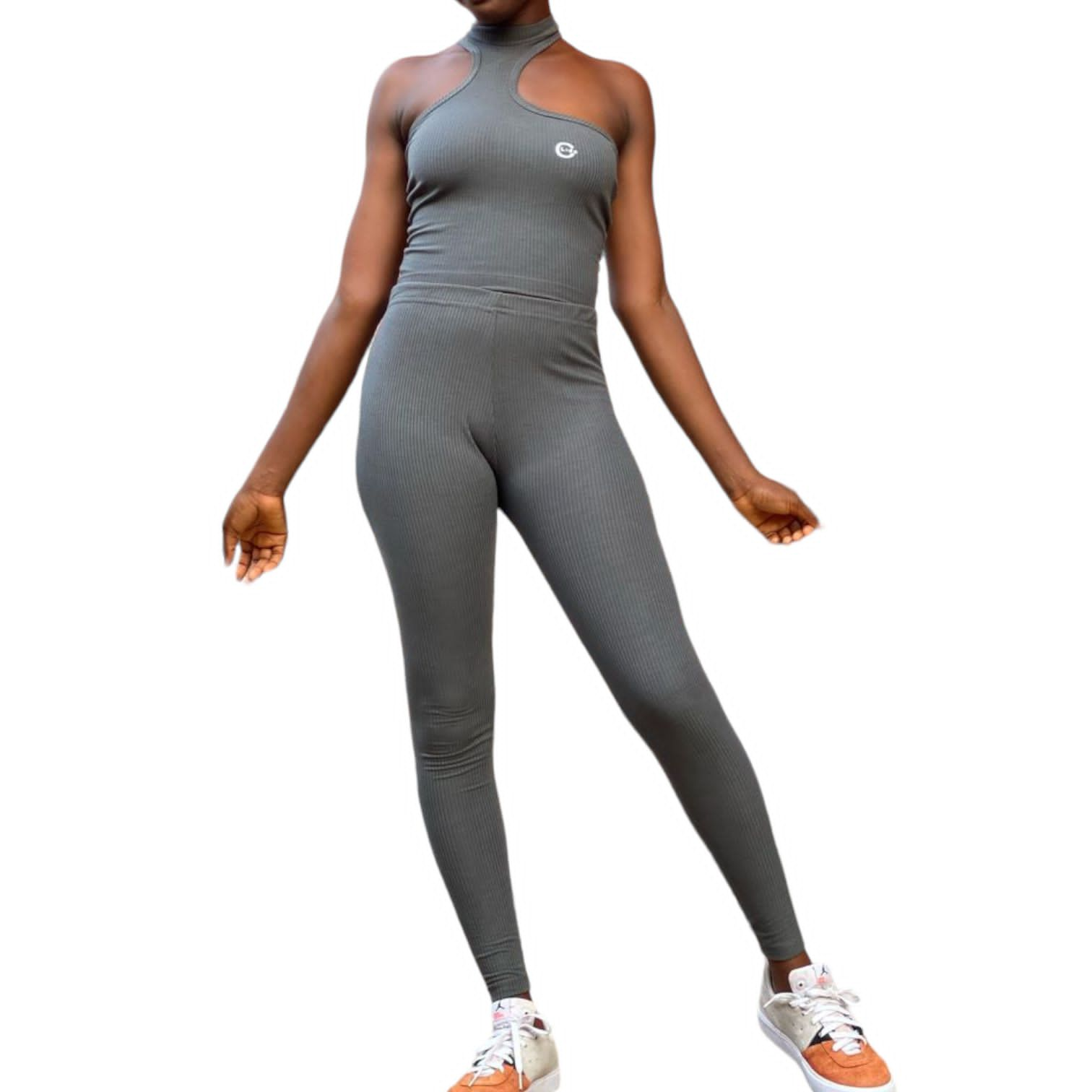22 Minute read
Definition:
A double needle machine is a sewing machine that
uses two needles and two bobbins to create two
parallel rows of lockstitch. This type of machine is
also known as a twin needle machine. The two
needles are attached to a single shank, with one
needle being slightly shorter than the other to allow
for the bobbin thread to catch both threads.

A Full Description Of A Double Needle
Sewing Machine
A double needle sewing machine is a type of sewing
machine that has two needles and two bobbins,
allowing for the creation of two parallel rows of
lockstitch. Here are some key features that describe a
double needle sewing machine:
1.Two needles: The machine has two separate
needles, one slightly shorter than the other,
which are attached to a single shank.
2.Two bobbins: The machine has two bobbins,
one for each needle, which holds the thread.
3.Parallel stitching: The machine creates two
parallel rows of lockstitch, with each needle
sewing a separate row.
4.Adjustable needle distance: The distance
between the two needles can be adjusted to
change the width of the stitching.
5.Zigzag stitch: Double needle machines typically
have a zigzag stitch option, which allows for
stretchy seams and decorative stitching.
6.Two thread sources: The machine has two
separate thread sources, one for each needle,
which can be used to create contrasting or
matching threads.
7.Synchronized stitching: The machine’s
mechanisms are designed to synchronize the
stitching of both needles, ensuring consistent and
even stitch.
Double needle sewing machines are commonly used
for sewing stretchy fabrics, such as knits, and for
decorative stitching on woven fabrics. They are also
useful for sewing two rows of stitching at once,
saving time and effort

The Function Of The Labelled Parts Of The
Double Needle Sewing Machine.
- Feed dogs: it is responsible for moving the fabric
forward as you sew - Tension selection panel: it is responsible for the
selection of different stitches. - Bobbin winder: it is responsible for the winding
of the thread onto the bobbin - Thread take-up: sit is responsible for the raising
and lowering of the thread to form the stitch - Presser foot: it is responsible for the holding of
the fabric as you sew. - Bobbin case: it is responsible for the holding of
the bobbin. It also guides the thread from the bobbin
to the needle. - Bobbin compartment: it is responsible for the
housing of the bobbin case. It also allows easy access
to remove and replace the bobbin. - Reverse lever: it allows the sew in reverse. it is
also used to reinforce the stitches at the beginning
and end the seam. - Foot pedal: it controls the speed of the machine. It
allows the user to sew at a consistent pace. - Spool pin: it is responsible for holding the thread
pool in place. It guides the thread from the spool to
the needle. - Balance wheel: it is responsible for the manual
rotation of the machine’s mechanism. It is also
known as handwheel. - Stitch width regulator: it controls the width of
the stitch and allows the user to adjust the width to
suit the different fabrics and sewing projects. - Stitch length regulator: Controls the length of
the stitch.
Uses And Benefits Of A Double Sewing
Machine
1.High Efficiency: Double needle machines can
stitch in two directions at once, reducing the
production cycle time compared to a typical
single needle machine.
2.Stability and Reliability: Double needle
machines ensure the firmness and durability of
the sewing thread, making them suitable for
materials that need to withstand greater tension
and pressure.
3.Intelligent: Modern double needle machines are
equipped with electronic control systems and
displays that allow parameters to be set and
adjusted as needed.
4.Decorative Effects: Double needle stitching
creates beautiful decorative effects like pintucks,
hemming and decorative seeming.
5.Durability: Garments sewn with double needle
machines are more durable thanks to the double
rows of reinforced stitching.
6.Thicker Materials: Double needle machines
can easily stitch through materials like denim,
canvas, or leather.
7.Ease of Use: Modern double needle sewing
machines feature intuitive controls, quick set-up,
and easy maintenance.
8.Cost Savings: Double needle machines provide
significant cost savings over time thanks to their
efficiency, versatility, and durability.
9.Applicability: Double needle machines are
widely used in garment manufacturing,
automobile interiors, furniture manufacturing,
shoe and hat making, and other industries.
10.Productivity: Double needle machines can
significantly boost efficiency and productivity,
allowing workers to accomplish more sewing
tasks in less time, reducing labor costs.
How To Maintain A Double Needle
Sewing Machine
- Read the manual: Before using the machine, read
the user manual to understand its specific features
and guidelines. - Wear protective gear: Wear protective glasses,
gloves, and a dust mask to prevent injury from flying
debris, needle pricks, and inhalation of lint and dust. - Keep long hair tied back: Long hair can get
caught in the machine’s moving parts, so keep it tied
back and away from the machine. - Avoid loose clothing: Wear tight-fitting clothing
and avoid loose sleeves or accessories that could get
caught in the machine. - Keep children away: Double needle sewing
machines can be hazardous for children, so keep
them at a safe distance. - Use the correct needles: Use needles specifically
designed for double needle machines to prevent
breakage and injury. - Keep fingers away from needles: Keep your
fingers away from needles and other moving parts to
prevent injury. - Use a walking foot or Teflon foot: These
specialized feet help guide the fabric smoothly and
prevent bunching or dragging, reducing the risk of
accidents. - Don’t sew over pins: Sewing over pins can cause
the machine to jam or break and may also cause
injury. - Unplug When Not in Use: Unplug the machine
when not in use to prevent accidental start-ups and
reduce the risk of electrical shock.
By following these safety precautions, you can
minimize the risk of injury and ensure a safe and
successful sewing experience with your double
needle sewing machine.
Processes Involved In Using A Double
Needle Sewing Machine
- Threading: Thread both needles and bobbins with
the desired thread, making sure to keep the threads
separate and untangled. - Setting the stitch length and width: Adjust the
machine’s settings to determine the length and width
of the stitches. - Selecting the stitch type: Choose the desired
stitch type, such as a straight stitch or zigzag stitch. - Placing the fabric: Position the fabric under the
presser foot, ensuring it is aligned and smooth.
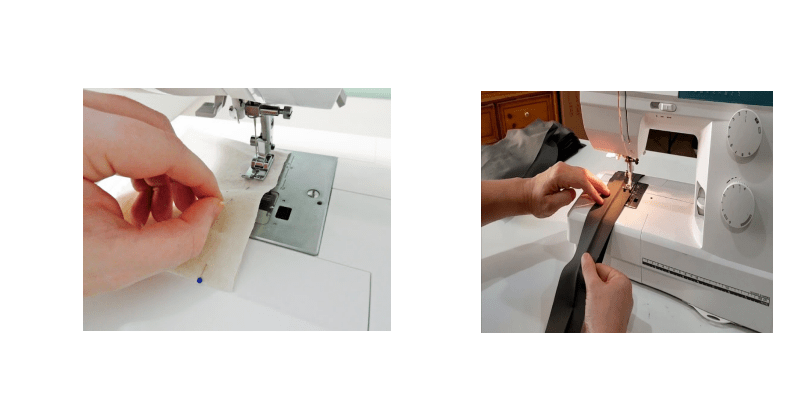
- Starting the machine: Begin sewing by slowly
turning the handwheel or pressing the start button. - Guiding the fabric: Use the presser foot and
guides to keep the fabric moving smoothly and
evenly. - Maintaining tension: Monitor and adjust the
thread tension as needed to prevent loose or tight
stitches. - Backstitching: Reinforce the beginning and end
of the seam with a few reverse stitches. - Cutting the threads: Cut the threads with scissors
or a thread cutter. - Inspecting the stitches: Check the stitches for
quality and consistency. - Adjusting the needles: Adjust the needle
distance and tension as needed for different fabrics
and stitches. - Cleaning the machine: Regularly clean the
machine to prevent lint and debris buildup.
By following these processes, you can effectively
use a double needle sewing machine to create strong,
professional-looking seams and decorative stitches.
How The Mechanism Of The Double Needle
Sewing Machine Works
A double needle machine, also known as a double
needle sewing machine, is a type of sewing machine
that uses two parallel needles to create two parallel
rows of stitches. This mechanism allows for faster
and more efficient sewing, particularly for straight
stitching and hemming. A diagram will be shown
below to help explain the mechanism.
Here’s a breakdown of the mechanism:
- Two parallel needles: The machine has two
needles, one on either side of the presser foot, spaced
a fixed distance apart (usually 1/4 inch or 6 mm). - Two separate threads: Each needle has its own
thread, which is fed through a separate tension disc
and take-up lever. - Synchronized motion: The two needles move up
and down in a synchronized motion, creating two
parallel rows of stitches. - Alternating stitches: The machine alternates
between the two needles, creating a stitch with one
needle and then the other, in a continuous cycle. - Presser foot: The presser foot holds the fabric in
place, guiding it smoothly under the needles as they
move up and down. - Tension control: The machine has separate
tension controls for each thread, allowing for
adjustments to be made for different fabric types and
stitch lengths. - Stitch length control: The machine typically has a
stitch length control, allowing the user to adjust the
length of the stitches.
The double needle machine mechanism enables
efficient sewing of straight lines, hems, and edges,
making it a popular choice for garment construction,
home decor, and quilting projects.
Safety Precaution to Be Taken When Using
A Double Sewing Machine
When using a double needle sewing machine, it’s
important to take certain safety precautions to avoid
accidents and injuries. Here are some safety tips to
keep in mind:
- Read the manual: Before using the machine, read
the user manual to understand its specific features,
settings, and guidelines. - Wear protective gear: Wear protective eyewear,
gloves, and a dust mask to prevent eye strain, cuts,
and inhalation of fabric dust. - Keep fingers away: Keep your fingers at least 1
inch (2.5 cm) away from the needles to avoid getting
pierced or caught. - Use the presser foot: Always use the presser foot
to guide the fabric, keeping your hands away from
the needles. - Keep the work area clear: Ensure the work area
is clear of clutter, lose threads, and other obstructions
to prevent accidents. - Use the correct needle size: Use the correct
needle size and type for the fabric you’re working
with to prevent breakage and accidents. - Keep the machine well-maintained: Regularly
oil and clean the machine to prevent jamming and
other issues. - Use a walking foot or Teflon foot: Consider
using a walking foot or Teflon foot to help guide the
fabric smoothly and prevent bunching. - Keep children and pets away: Keep children and
pets away from the machine while it’s in use to
prevent accidents. - Take breaks: Take regular breaks to rest your
eyes, hands, and mind to prevent fatigue and
mistakes. - Use a needle guard: Consider using a needle
guard or needle shield to protect yourself from
accidental needle pricks. - Unplug when not in use: Unplug the machine
when not in use to prevent accidental start-ups and
electrical shocks.
By following these safety precautions, you can minimize the risk of accidents and enjoy safe and
successful sewing with your double needle machine
Multi-Choice Questions
Part A
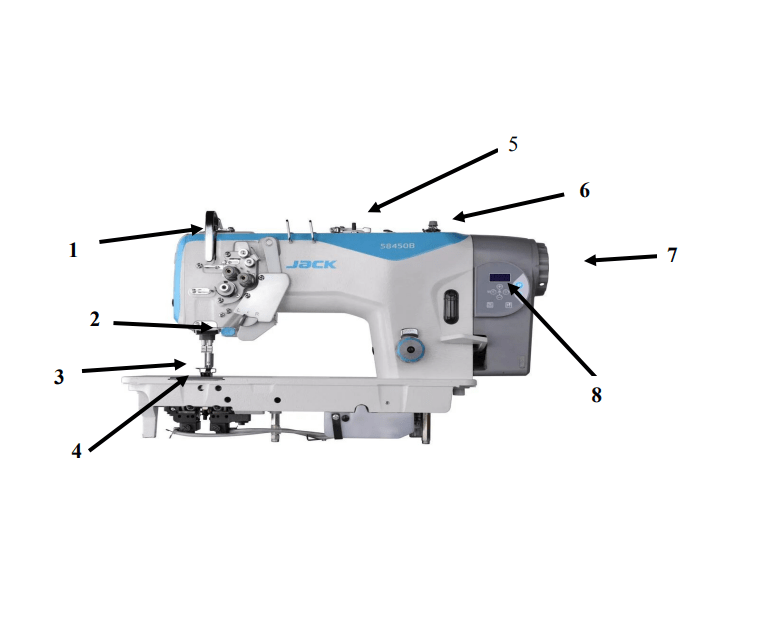
From The Diagram Above Fix In The Correct
Parts That Matches The Number.
- The part labelled 1 is called?
A. Thread guide
B. Thread take- up
C. Needle
D. Bobbin - The part labelled 2 is called?
A. Led light
B. Foot pedal
C. Spool thread
D. Reverse level - The part labelled 3 is called?
A. Bobbin compartment
B. Needle feed dog
C. Needle
D. Presser foot lift - The labelled part 6 is called?
A. Bobbin winder stopper
B. Stitch length regulator
C. Stitch selection panel
D. Balance wheel - the part labelled 5 is called?
A. Winder
B. Bobbin Winder
C. Stitch Width Regulator
D. Foot Pedal - The part labelled 4 is called?
A. Thread take up
B. Needle
C. Bobbin housing
D. Bobbins - The part labelled 8 is called?
A. Bobbin case
B. Bobbin wheels
C. Stitch
D. Speed adjuster - The part labelled 7 is called?
A. Balance stitch
B. Needle case
C. Hand wheel
D. Stitch length regulator - The part labelled 12 is called?
A. Stitch length regulator
B. Needle compartment
C. Thread base
D. Needle guide
Part B
Pick the right options in each question among the
answers listed below.
- Which part of the machine provides illumination.
A. Stitch compartment
B. Stitch base
C. Balance stitch case
D. LED light - A small mechanism that stops the bobbin winder
is called?
A. Reverse wheel
B. Reverse panel
C. A bobbin winder stopper
D. Spool pin - Which part of the machine holds the bobbin in
place?
A. Spool thread
B. Bobbin housing
C. Bobbin
D. Foot pedal - a double needle sewing machine can do various
stitches except?
A. Needle stitch
B. Zigzag stitches
C. Decorative stitch
D. Straight stitch - What are the common issues with double needle
sewing machine except?
A. Uneven tension
B. Even needles
C. Needle breakage
D. Thread tangling - When threading make sure to keep the Thread?
A. Closer
B. Separate and tangle
C. Far and wide
D. Near - How do you start a double needle sewing
machine?
A. Thread case
B. Thread take up.
C. Press the start button
D. Bobbin compartment - The double needle sewing machine should be
cleaned?
A. Rarely
B. often
C. Regularly
D. Never - What should you wear to protect your eye from
flying debris when using a double needle sewing
machine.
A. Goggles
B. Glasses
C. Sunglasses
D. Contacts - Why should you keep long hair tied back when
using a double needle sewing machine?
A. To prevent hair from obstructing your view.
B. To prevent hair from getting tangled in the
machine.
C. To prevent hair from getting caught in the needle.
D. To prevent hair from falling on the fabric. - What should you do with loose clothing
accessories when using a double needle machine?
A. Keep them.
B. Remove them.
C. Tie them.
D. Tuck them in. - Why should children be kept away from the
double needle machine?
A. Because they might break it.
B. Because they might make a mess.
C. Because they might get hurt.
D. Because they might distract you. - What should you do when you notice a needle is
damaged or bent?
A. Keep using it.
B. Replace it.
C. Try to fix it.
D. Ignore it. - Why is it important to keep your fingers away
from the needles?
A. Because they might get dirty.
B. Because they might get tangled.
C. Because they might get hurt.
D. Because they might get stuck. - What should you do if the machine starts making
a strange noise?
A. Keep sewing.
B. Stop sewing and investigate.
C. Call a professional.
D. Unplug it. - Why is it important to use the correct needles for
a double needle sewing machine?
A. To prevent breakage.
B. To prevent tangling.
C. To prevent injury.
D. To prevent damage to the machine. - What should you do if you notice a thread is
tangled or knotted?
A. Keep sewing.
B. Stop sewing and untangle it.
C. Cut the thread.
D. Pull the thread harder. - Why is it important to unplug the machine when
not in use?
A. To prevent overheating.
B. To prevent electric shock.
C. To prevent damage.
D. To prevent theft. - By following safety precautions you can?
A. Reduce cost.
B. Increase production.
C. Minimize risk of accident.
D. Take a break. - Which part of the double needle sewing machine
holds the fabric in place?
A. Needle bar
B. Bobbling compartment
C. Presser foot
D. Presser lever - Which part of the double needle sewing machine
houses the bobbin case?
A. Bobbin compartment
B. Foot petals
C. Bobbin case
D. Reverse button - Which part of the double needle sewing machine
controls the speed of the machine?
A. Tension disc
B. Bobbin winder
C. Needle bar
D. Foot pedal - Which part of the double needle sewing machine
holds the thread in place?
A. Balance wheel.
B. Bobbin case.
C. Spool pin.
D. Stitch length regulator. - Which part of the double needle sewing machine
controls the width of the stitch?
A. Stitch width regulator
B. Width stitch controls.
C. Stitch controls
D. Length width regulator. - Which part of the double needle sewing machine
controls manual rotation?
A. Spool wheel
B. Balance wheel
C. Presser wheel
D. Machine body - What is the first step in threading a double needle
sewing machine?
A. Thread the needles.
B. Thread the bobbin.
C. Set the stitch length and width.
D. Place the fabric under the presser foot. - How do you select the correct stitch type on a
double needle sewing machine?
A. By adjusting the stitch length and width.
B. By changing the needle type.
C. By using the stitch selector dial.
D. By consulting the user manual. - How do you prevent thread tangling on a double
sewing machine?
A. By using a thread conditioner.
B. By keeping the thread taut.
C. By using a different thread type.
D. By using the bobbin tension. - How do you adjust the tension on a double
sewing machine.
A. By tightening the needle screw.
B. By adjusting the bobbin tension disc.
C. By changing the stitch length and width.
D. By using a different thread type. - What is the purpose of the balance wheel on a
double needle sewing machine?
A. To thread the machine.
B. To remove jams.
C. To adjust the stitch length and width.
D. To set the needle tension. - How do you maintain consistent stitching on a
double needle sewing machine?
A. By adjusting the stitch length and width.
B. By keeping the fabric smooth and flat.
C. By using walking foot.
D. By consulting the user manual
Part C
Fill in the gap with the appropriate answers.
- The double needle machine is also known as________________
- A double needle-machine has two needles that
are ___________ - A double sewing machine has __________.
- A balance wheel is also called a _________.
- In a double needle sewing machine the two
needles are attached to a ___________. - ______________are commonly used for sewing
stretchy fabrics. - Double needle machines can stitch in ____________
directions. - Fabric is positioned under the ___________ foot.
- ___________can be done to prevent jamming and
other issues. - ____________helps to prevent breakage in a double
needle sewing machine.

Answer the filling the gap question 41-50.
- TWIN NEEDLE MACHINE.
- SLIGHTLY SHORTER THAN THE OTHER.
- TWO NEEDLES AND TWO BOBBINS.
- HANDWHEEL.
- SINGLE SHANK.
- DOUBLE NEEDLE SEWING MACHINE
47.TWO DIRECTION. - PRESSER FOOT.
- REGULAR OILING AND CLEANING.
- USE OF CORRECT NEEDLE.


